Britain's answer to 'King Tut's tomb' found on roadside
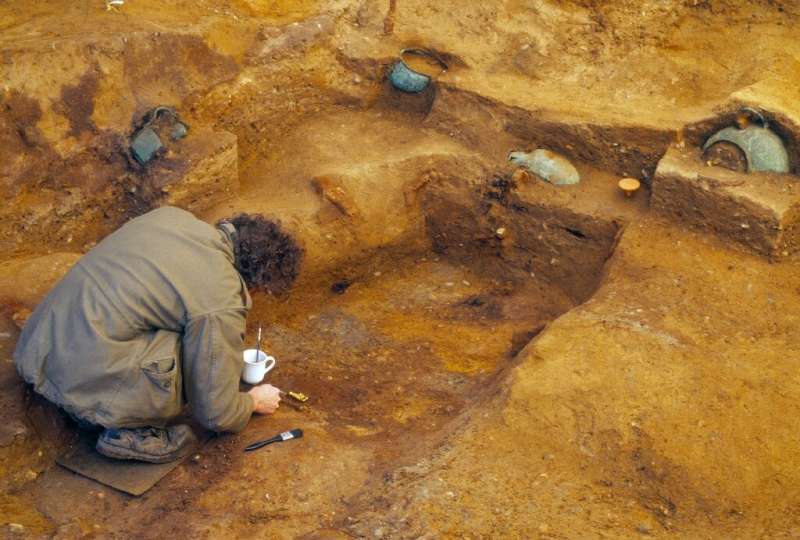
Excited archeologists on Thursday hailed an ancient burial site found on the side of a road near a pub and a budget supermarket as Britain's answer to the tomb of Egypt's King Tutankhamun.
The small bump on a patch of grass in the county of Essex just northeast of London did not look like much when UK researchers first spotted it in 2003.
"The thing that's so strange about it is that it was such an unpromising-looking site," Museum of London Archaeology's (MOLA) director of research Sophie Jackson said.
But a team of 40 MOLA archeologists still decided to give it a shot.
Years of meticulous digging and carbon dating have now led them to conclude that they have stumbled onto an Anglo-Saxon burial chamber of a prince whose likes have never before been found in Britain.
The 1,400-year-old tomb is believed to be the oldest example of a Christian Anglo-Saxon royal burial.
It includes carefully arranged gold coins and vibrantly-coloured glass and wooden drinking vessels believed to have come from what is now modern-day Syria.
Some of the decorations still hang on the site's original walls.
The entire structure would have formed a 13-foot (four-metre) square and been buried five feet below ground.
It includes fragments of a lyre—a type of harp popularised in European folklore—and what may be Britain's oldest example of painted Anglo-Saxon woodwork.
"I think it's our equivalent of Tutankhamun's tomb," Jackson said.
Tutankhamun is the formal name of the mummified pharaoh most tourists visiting Egypt's Valley of the Kings know as King Tut.
-
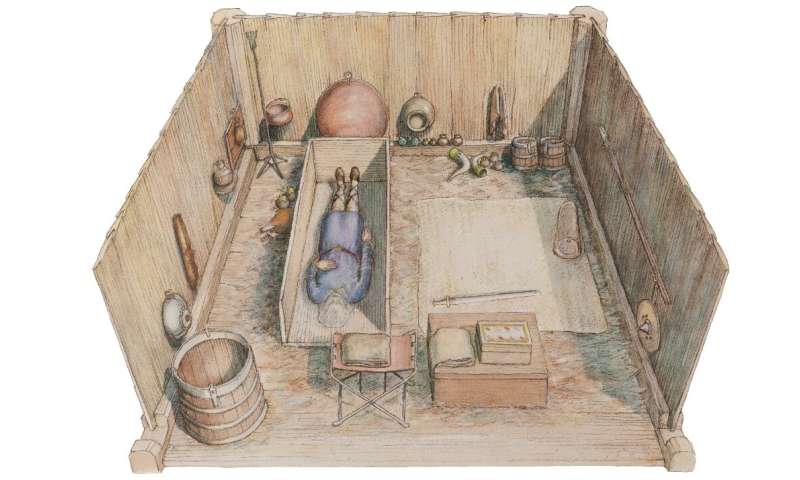
The precise identity of the man in the tomb remains a mystery -
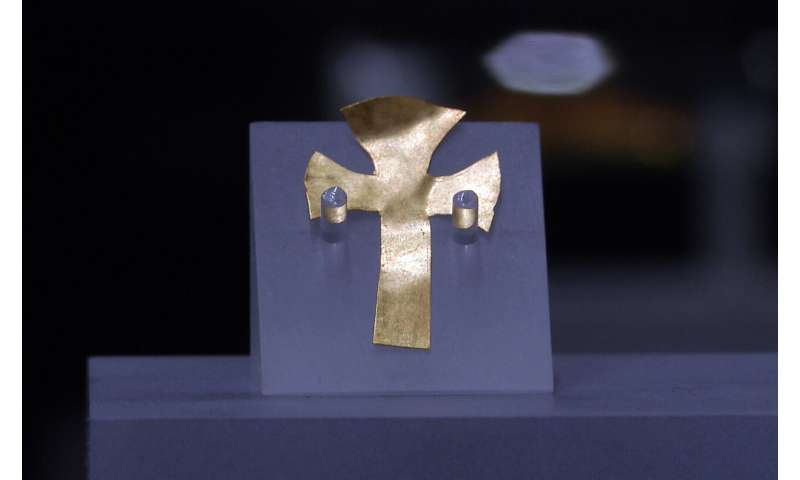
A gold foil cross uncovered at an Anglo-Saxon burial site in the village of Prittlewell in 2003 on display at Southend Central Museum in Southend, England, Thursday, May 8, 2019. Archaeologists say an underground chamber discovered accidentally by road workers may be the site of the earliest Christian royal burial in Britain. The chamber uncovered between a road and a railway line in the village of Prittlewell in 2003 turned out to be a 1,400-year-old burial site. (AP Photo/James Brooks) -
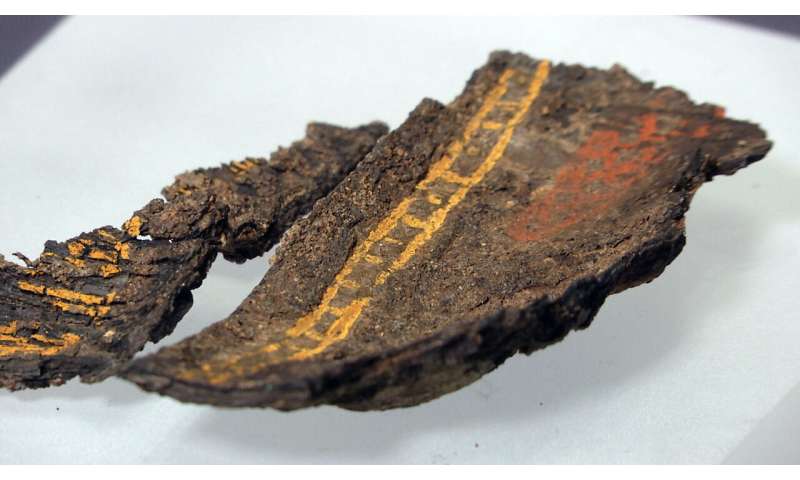
A painted wooden box fragment, claimed to be the only surviving example of early Anglo-Saxon painted woodwork, on display at Southend Central Museum in Southend, England, Thursday, May 8, 2019. Archaeologists say an underground chamber discovered accidentally by road workers may be the site of the earliest Christian royal burial in Britain. The chamber uncovered between a road and a railway line in the village of Prittlewell in 2003 turned out to be a 1,400-year-old burial site. (AP Photo/James Brooks) -
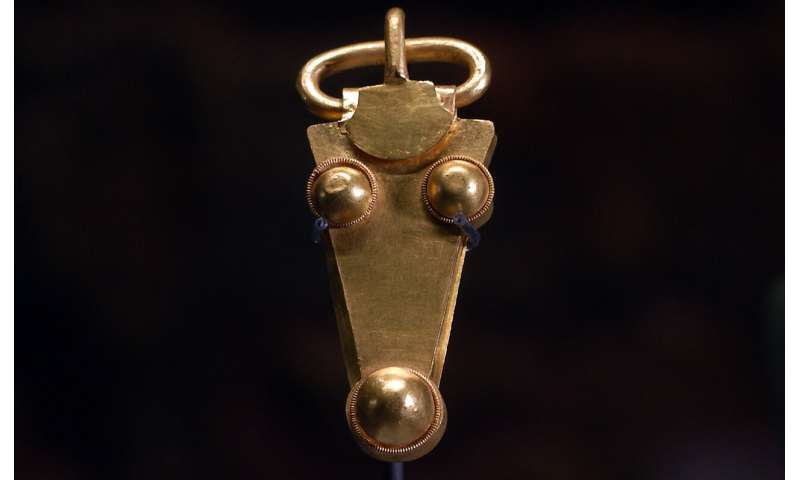
A golden belt buckle uncovered at an Anglo-Saxon burial site in the village of Prittlewell in 2003 on display at Southend Central Museum in Southend, England, Thursday, May 8, 2019. Archaeologists say an underground chamber discovered accidentally by road workers may be the site of the earliest Christian royal burial in Britain. The chamber uncovered between a road and a railway line in the village of Prittlewell in 2003 turned out to be a 1,400-year-old burial site. (AP Photo/James Brooks)
"It's a really interesting time," the researcher explained.
"Christianity is sort of creeping (into Britain). They would have been just on the transition between having pagan burials with all your gear but also having these crosses."
Warrior prince or king's brother?
King Tutankhamun's tomb is globally renowned for its phenomenally preserved golden death mask dating back more than 3,300 years.
The British find is less than half as old and includes the belongings and remains of a far less distinguished man whose precise identity remains shrouded in a degree of mystery.
But his 5 foot 8 inch (1.72-metre) frame was exceptionally large for its time.
Some suspect that he may have been a warrior prince. Jackson said her best guess was that he was King Saebert's brother Seaxa.
Saebert died in 616 after ruling Essex for 12 years. Historians think he was the region's first Christian king.
Research and scientific dating suggest the man in the tomb probably died between 575 and 605.
MOLA intends to put some of its discoveries on display at a local museum this week.
It is especially proud of the lyre.
"This is the first time the complete form of an Anglo-Saxon lyre has been recorded," the museum said in its research notes.
© 2019 AFP




















